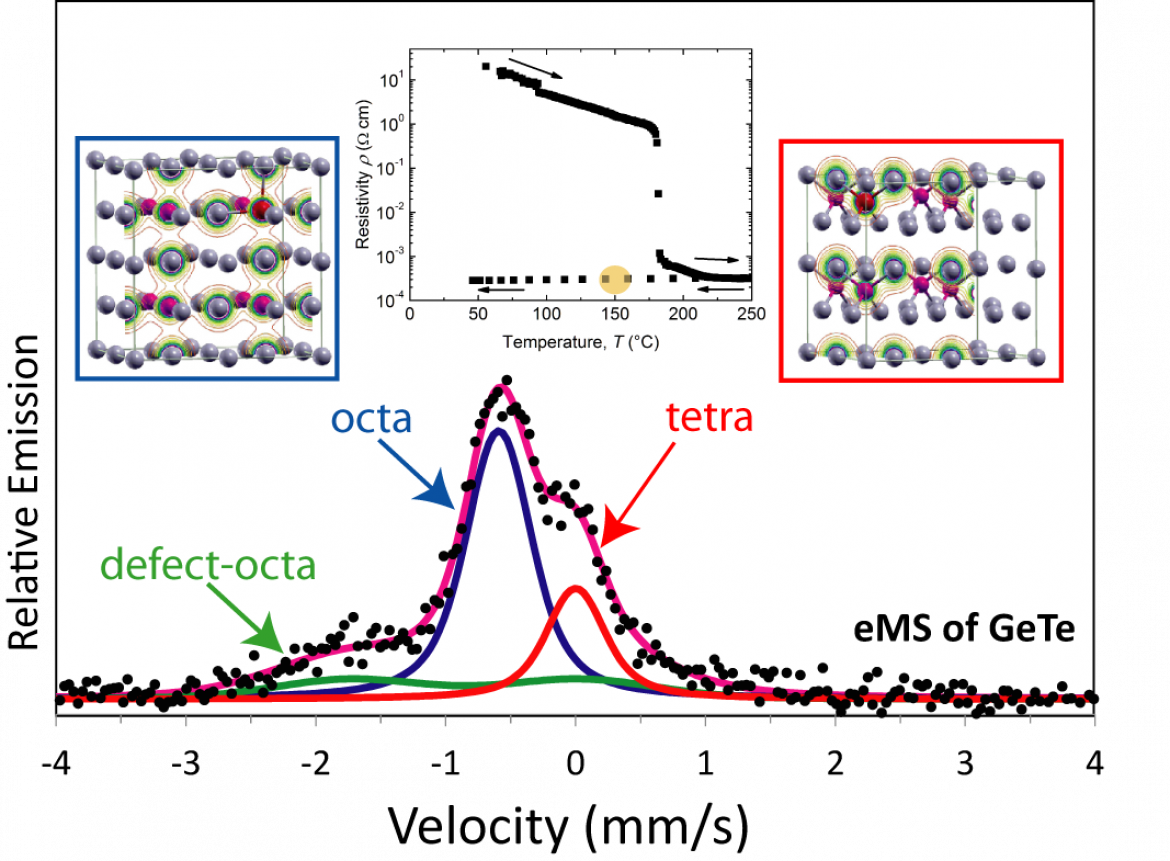
The unique method of 57Fe emission Mössbauer spectroscopy (eMS), as performed at the large-scale facility of ISOLDE at CERN, was employed to reveal, at the most atomic-scale, important aspects governing the amorphous-to-crystalline phase transition in GeTe thin films, of importance for phase change memory (PCM) applications. By following dilute implantation of 57Mn (T½ = 1.5 min) decaying to 57Fe, we investigated the changes of the electronic charge distribution and local environment occurring around Fe probe substituting Ge (FeGe), across the phase transition. The local structure of as-sputtered amorphous GeTe turned out to be a combination of tetrahedral and defect-octahedral sites. Upon crystallization a large conversion from tetrahedral to defect-free octahedral sites occurred. We discovered that only the tetrahedral fraction in amorphous GeTe participates to the change of the FeGe-Te chemical bonds, with a net electronic charge density transfer of ~ 1.6 e/a0 between FeGe and neighboring Te atoms. The observed atomic-scale chemical-structural changes resulted to be directly connected to the macroscopic phase transition and resistivity switch of GeTe thin films. The original paper by R. Mantovan et al is available at Scientific Reports.


